Corporate, one of the segments analyzed in the report, is projected to grow at a 12.9% CAGR to reach US$4.1 Billion by the end of the analysis period. After a thorough analysis of the business implications of the pandemic and its induced economic crisis, growth in the Education segment is readjusted to a revised 10.3% CAGR for the next 7-year period. This segment currently accounts for a 9.7% share of the global Web and Video Conferencing SaaS market. The demand for video conferencing platforms is higher than ever, and the global video conferencing market size is expected to reach $10.92 billion by 2027. By looking at the global search volume, our study revealed the total market share for each video call platform, and compared 2020 vs 2021, to which platforms achieved the most growth during the pandemic.
The Web and Video Conferencing SaaS market in the U.S. is estimated at US$1.4 Billion in the year 2021. Asia-Pacific is forecast to reach an estimated market size of US$2.4 Billion in the year 2026 trailing a CAGR of 12.9% through the analysis period. Among the other noteworthy geographic markets are Canada and Europe, each forecast to grow at 10.3% and 10.5 respectively over the analysis period. Within Europe, Germany is forecast to grow at approximately 11% CAGR while Rest of European market will reach US$1.2 Billion by the end of the analysis period. Growth in the North America region is fueled by implementation of web & video conferencing solutions to replace or upgrade traditional systems and adoption of new technologies such as AI and IoT.
Countries in the region are investing heavily in AI and 5G for reinforcing network connectivity systems, creating a dynamic environment for innovations that is likely to drive the web & video conferencing market. By looking at the global search volume, our study revealed the total market share for each video call platform, and compared 2020 vs 2021, to see which platforms achieved the most growth during the pandemic. The rising trend of globalization, along with the high internet penetration rate, is one of the key factors driving the market growth. These trends have led to the emergence of the virtual workspace, which is gaining immense preference across the globe, owing to its flexibility. The online corporate meeting service forms an integral part of virtual workspaces where one can instantly collaborate on projects, share their knowledge base and utilize mobile and cloud computing facilities. This also assists in reducing the transportation costs and travel time associated with in-person meetings as well as providing work-time flexibility.
Additionally, improved user experience, product simplification, smart workflow mechanisms of web conferencing and reduced operational costs of the organizations are some of the other factors contributing to the market growth. North America is expected to dominate the global video conferencing market in terms of revenue share in the global market during the forecast period. North America dominated the market for video conferencing in 2020 and acquired a revenue share of over 39%. The regional market is mature in terms of the adoption of video conferencing solutions. However, growth opportunity lies in the region for upgrades to existing equipment and subscription of cloud-based services. Increased demand for continuous access to high-quality internet and visual meetings is expected to contribute to regional growth.
The presence of several key players, coupled with the growing popularity of Bring Your Own Device solutions, which has resulted in the large-scale adoption of webcams and headphones, is further expected to drive market growth. By all indications, the global web conferencing market is one of the most dynamic in the entire technology world today. The ever increasing demand for the best cloud-based communications solutions and mobile applications among businesses is a significant driver of this growth.
The growing appreciation of business mobility and the implementation of Bring-Your-Own-Device policies also advance the web conferencing market share for these tools. The plunging prices of video and web conferencing products, both software and hardware, are also helping boost this market growth. The growing trends of implementing video banking solutions owing to the growing penetration of mobile and online banking among users are expected to accelerate the video conferencing market growth. In addition, video banking allows end-users to communicate securely, and connect with remote clients and coworkers, thereby improving operational efficiency. Hence, there is growing adoption of visual communication solutions in the banking and finance sector for loan officers, consumer service representatives, financial advisors, and many others.
Key players are introducing new products to cater to the rising demand for video banking solutions in the banking and finance sector. The key aspect, which is fueling the growth of the video conferencing market, is the increasing demand for video communication due to the globalization of companies with scattered business operations across the world. There are some fields like online education and telemedicine that are strengthening their foot in emerging nations like India, the Philippines and Brazil, which are significantly propelling the demand for such solutions. At present, there has been a swift increase in the number of online seminars, conferences and international workshops, which is estimated to further surge the demand for video conferencing solutions.
The demand and requirement for video conferencing is expanding continuously due to geographically dispersed businesses and remote workforce management. The emergence of new technologies such as IoT, cloud computing, VR, improved video compression, and AI are likely to drive the video conferencing market. The conference experience and video quality for employees and enterprises is improving due to the use of AI-enabled technologies. Video conferencing solutions are witnessing a further increase in demand owing to an increasing count of online seminars, conferences, and international workshops. The on-premise segment dominated the video conferencing market in 2020 by capturing a revenue share of over 59%.
This can be attributed to the increasing adoption of on-premise deployment by large organizations in response to the growing concerns regarding data theft and effective maintenance of information security systems. However, the segment is expected to witness slow growth over the forecast period owing to the growing prominence of cloud-based solutions. In response to this trend, companies have also started moving to the cloud revenue generation model. For instance, Avaya, Inc. transformed its revenue generation model from legacy on-premise to cloud. The Asia Pacific regional market is expected to witness the fastest growth over the forecast period.
The sudden shift to the remote working model has increased the demand for collaboration tools, video conferencing equipment, and accessories, thereby boosting the market growth in the region. Furthermore, advancements in mobile broadband technologies, such as High-Speed Downlink Packed-Access networks and WiMAX, in countries such as India and Japan, are expected to accelerate the growth of the regional market. The enterprise segment dominated the market in 2020 by capturing a revenue share of over 84%. Conference video endpoints are room-based hardware solutions that are fixed, installed, and configured in meeting rooms and boardrooms.
These are all-in-one systems that do not require additional hardware or software, as the codec communicates with other endpoints and transfers video signals and data. Among these, the solution segment is estimated to hold the largest video conferencing market share during the forecast period. The growth is attributed to the rising demand for video collaboration solutions such as Zoom, Skype, Microsoft Teams, and others in various industries. In order to ensure business continuity amidst the COVID-19 crisis, business organizations, especially in highly affected countries are allowing their employees to work from home.
The increase in people working from home has led to a surge in demand for online video viewing, downloading, and communication through video conferencing, all of which are leading to increased network traffic and data usage. COVID-19 shall accelerate the demand for agile and flexible work styles and further push the adoption of communication services that tend to improve work-life balance. On the flip side, telecom regulators worldwide have postponed their plans of 5G spectrum auction amidst the global pandemic. This is expected to have an impact on the commercialization of commercial 5G standalone deployments and revenue generated through 5G services.
The ongoing pandemic has forced telecom operators worldwide to test their network resiliency and revisit their planned investments, especially in 5G technology. Based on Regions, the market is segmented into North America, Europe, Asia Pacific, and Latin America, Middle East & Africa. Asia-Pacific region is estimated to record the fastest growth rate during the forecast period. The growing number of technology and service-based start-ups in emerging nations like India and China is anticipated to bolster the regional market growth.
The robust presence of business and knowledge process outsourcing enterprises in this region is also projected to be among the key aspects augmenting the video conferencing market. The growing evolution of the education sector has resulted in the increased demand for new curriculum standards globally. Universities, schools, and community colleges are majorly investing in HD video collaboration for improving engagement between educators and students. The trend of distance learning programs among students for upgrading their knowledge base has resulted in the increased demand for high-quality and affordable solution. With the ongoing coronavirus (COVID-19) pandemic and disruptions in large gatherings, demand for remote training is increasing, eventually driving the video conferencing market demand. Several global enterprises including Microsoft Corporation, Google LLC, Apple Inc., Hitachi Ltd., and Amazon have announced mandatory work-from-home policies to prevent the spread of COVID-19.
The rapidly increasing cases of virus has necessitated the demand for video conferencing software as business travel, educational institutes, conferences are cancelled globally. The growth is attributable to the rising demand for video collaboration solutions for advanced automation processes in the research and education sectors. Key market players are focusing on product launching strategies to enhance their product portfolio.
The aim is to expand the simple, fast, and cost-efficient teams meeting product offerings for large and medium enterprises. The region is expected to exhibit enormous growth potential in the market, owing to the existence of a considerable number of SMEs and a huge number of headquarters of global top 1000 companies in the region. In 2020, North America dominated the video conferencing industry, with a revenue share of more than 39%. However, there is room for expansion in the region for upgrading existing technology and subscribing to cloud-based services.
Increasing internet penetration and surge in number visual meetings is projected to contribute to regional growth. The existence of many important companies, together with the rising popularity of Personal Devices options, which has resulted in widespread use of webcams and headphones, is likely to push market expansion even further. Not only may direct savings be made on travel expenses, but also on communication costs.
Video conferencing lowers the typically time-consuming organizational work involved in vacation preparation. There is also no downtime, which is not always spent constructively while travelling. Video conferencing save coordination time and enhance staff productivity in organizations with many locations. In the long term, web conferencing decreases the amount of space needed, which reduces land consumption. The global spread of the Coronavirus has resulted in an unprecedented demand for video conferencing solutions.
This technology, which has virtually become a necessary instrument to substitute actual encounters during this period of confinement, has resulted in the birth of a sector that is frequently viewed as unclear yet in full change. With COVID-19, the entire workforce has experienced a transition toward remote working, paving a way for video conferencing solution and hardware products. The study presents a thorough analysis of the competitive landscape, taking into account the market shares of the leading companies.
These provide the key market participants with the necessary business intelligence and help them understand the future of the web conferencing market. The assessment includes the forecast, an overview of the competitive structure, the market shares of the competitors, as well as the market trends, market demands, market drivers, market challenges, and product analysis. The market drivers and restraints have been assessed to fathom their impact over the forecast period. This report further identifies the key opportunities for growth while also detailing the key challenges and possible threats. The key areas of focus include the types of cheese in the web conferencing market, and their specific applications in different areas.
The global market research report highlights leading regions worldwide to offer a better understanding of the user. Furthermore, the report provides insights into the latest video conferencing market trends and analyzes technologies deployed rapidly globally. It further highlights some of the growth-stimulating factors and restraints, helping the reader gain in-depth knowledge about the market. The Global Video Conferencing Market size is expected to reach $21.8 billion by 2027, rising at a market growth of 16% CAGR during the forecast period. Video conferencing is the method of communication that takes help of different kinds of telecommunication technologies with the real-time, two-way transmission of video & audio among people. By utilizing video conferencing technology, companies get much-needed help in making faster decisions and eliminating travel time and costs attached to it.
In addition, it also assists in minimizing the overall operational & management costs while boosting the productivity. The market study covers the Web Conferencingmarket size across different segments. It aims at estimating the market size and the growth potential across different segments, including application, service model, security type, organization size, vertical, and region. The study further includes an in-depth competitive analysis of the leading market players, along with their company profiles, key observations related to product and business offerings, recent developments, and market strategies.
Due to the COVID-19 pandemic, a large number of organizations globally have encouraged their employees to work from home or remotely, driving the demand for video conferencing applications and software. The education sector witnessed a notable rise in the demand for these solutions in 2020 to continue with online learning and seminars. The primary growth driver for the market, especially in 2020, remained the need for organizations to facilitate employee collaboration, which led to the demand for conferencing apps such as Microsoft Teams, Google Meet, and Zoom. Several companies have witnessed the digital transformation in just 2 to 3 months that would otherwise occur over two years due to the COVID-19 pandemic. However, despite the elevated demand, security concerns have posed to be a challenge to market growth. With rapidly changing business dynamics, companies are shifting toward cloud applications for maintaining and expanding communication resources in a cost-effective manner.
This has helped enterprises to reduce upfront expenses by transferring designing of communication solutions to expert service providers. Companies in the video conferencing market are focusing on software innovations to capitalize growth opportunities. APAC has several growing economies, such as China, Australia and Japan, which are expected to register high growth in the video conferencing market.
These countries have always supported and promoted industrial and technological growth. In addition, they possess a developed technological infrastructure, which is promoting the adoption of video conferencing solutions across all industry verticals. The network market in APAC is driven by the growing acceptance of cloud-based solutions, emerging technologies such as the IoT, and big data analytics and mobility. The study provides a crucial view on the # market by segmenting the market based on product type, application, and region. All the segments of # market have been analysed based on present and future trends and the market is estimated from 2020 to 2030.
This report will identify dominating sub-segments in terms of revenue contribution for the base year as well as during the forecast period. The fastest-growing sub-segments with its major growth driving factors are also presented in the report. The video conferencing market share, which is highly competitive, consists of a few major players. In The key players of Video Conferencing market are Vidyo Inc. , Zoom Video Communication Inc. , Logitech International S.A.
Ltd. , Avaya Inc. , Google, LLC , Facebook, Inc. , Lifesize Inc. , StarLeaf , Premiere Global Services, Inc. , ezTalks Technology Co., Ltd. , Bharti Airtel Limited ,, Cisco , Reliance JioInfocom Limited and others. The growing demand for technology-enabled video conferencing solutions is driving the market growth. Rapid adoption of cloud-based solutions and incorporation of 3D technology have enhanced the quality of human-centric communication. The 3D video conference system provides immersive telepresence and real representation of all participants.
It ensures eye contact and gesture-based interactions of participants in a conference room. In addition, the technology providers are integrating innovative technologies, such as AR/VR, for extending the capabilities of solutions. Video conferencing is finding increasing acceptance among medical professionals to treat patients while practicing social distancing during COVID-19. The technology is likely to also gain considerably from growing focus on telemedicine. Video conferencing is anticipated to be widely used by healthcare professionals to offer consultations and conducting uninterrupted sessions over video to support patents in remote areas.
In the global Healthcare segment, USA, Canada and Europe will drive the 9.1% CAGR estimated for this segment. These regional markets accounting for a combined market size of US$136.9 Million in the year 2020 will reach a projected size of US$259.3 Million by the close of the analysis period. China will remain among the fastest growing in this cluster of regional markets.
Led by countries such as Australia, India, and South Korea, the market in Asia-Pacific is forecast to reach US$114.7 Million by the year 2026. APAC has several growing economies, such as China, Australia, New Zealand and Japan, which are expected to register high growth in the video conferencing market. In addition, they possess a developed technological infrastructure, which is promoting the adoption of Video conferencing solutions across all industry verticals. APAC is driven by the growing acceptance of cloud-based solutions, emerging technologies such as the IoT, and big data analytics and mobility. The global video conferencing market size was estimated at USD 4.21 billion in 2020 and is expected to reach USD 4.66 billion in 2021. The corporate segment dominated the market in 2020 and acquired a revenue share of over 28%.








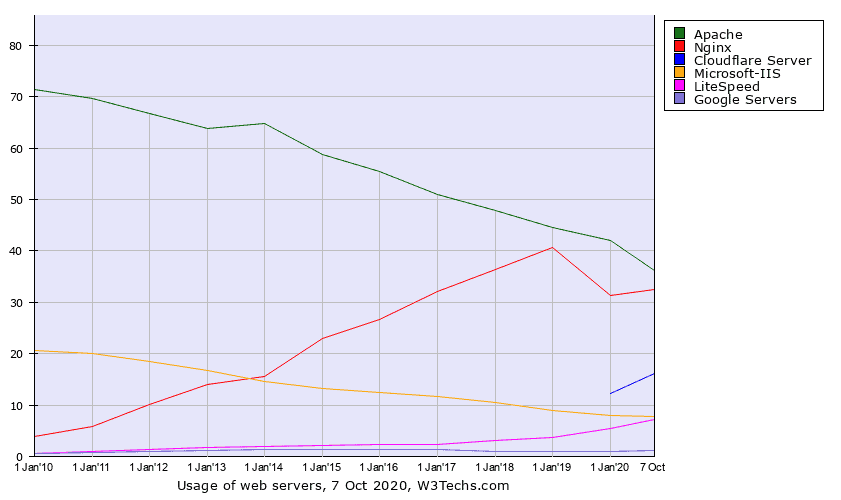
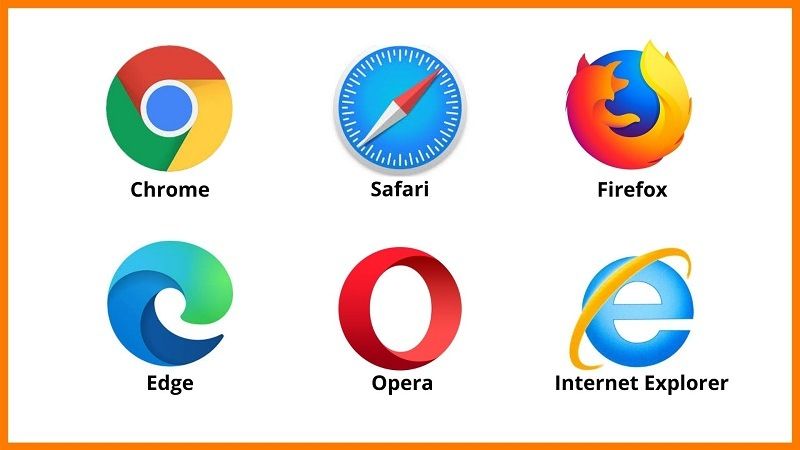






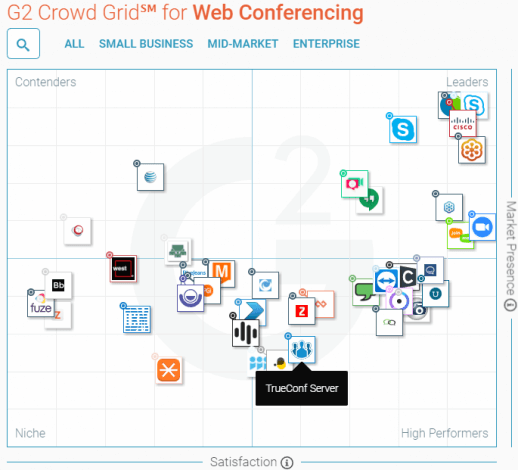

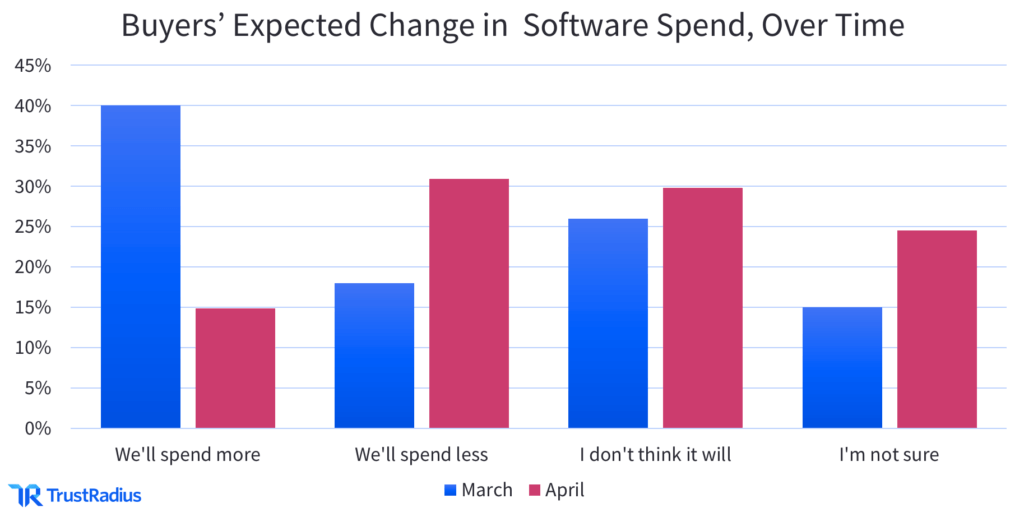


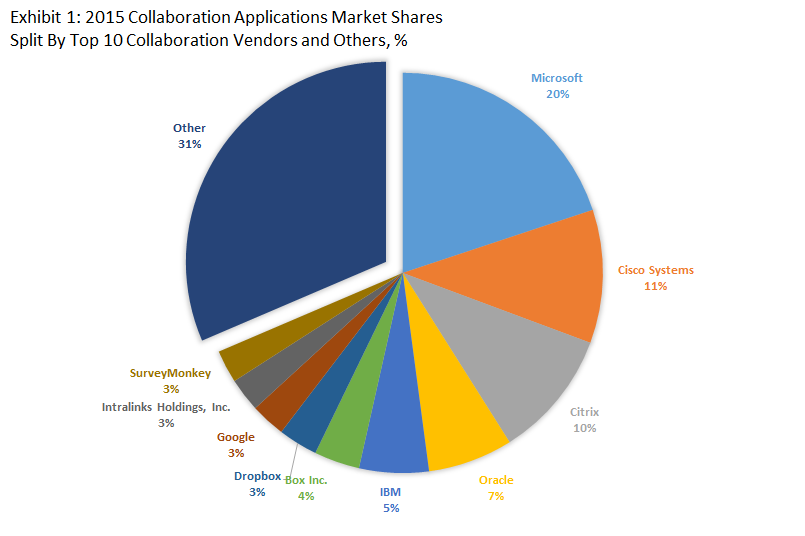




No comments:
Post a Comment
Note: Only a member of this blog may post a comment.